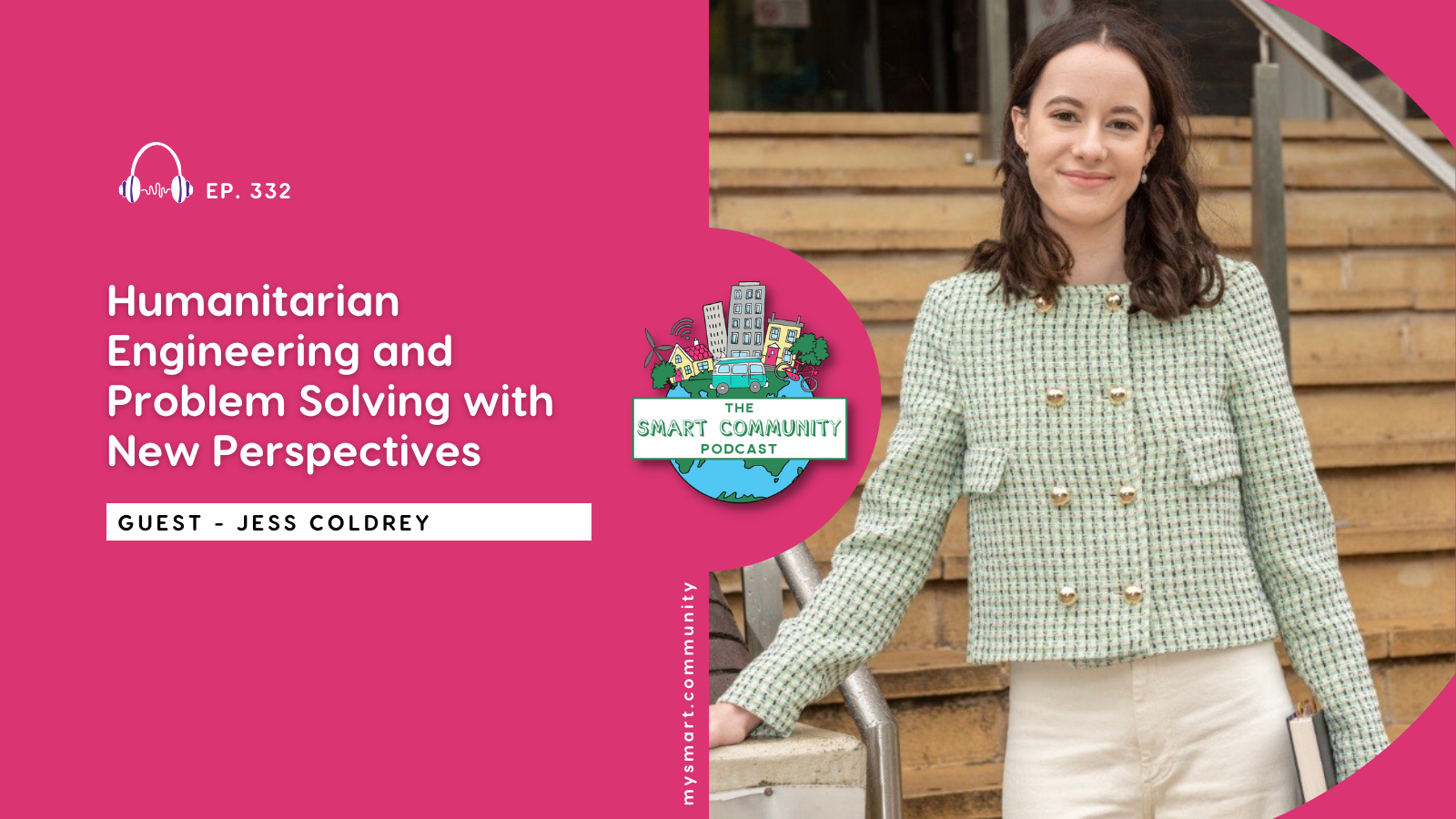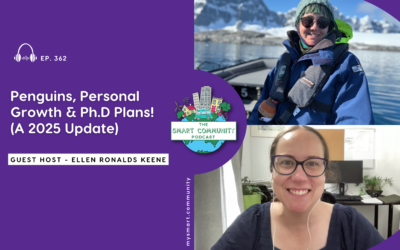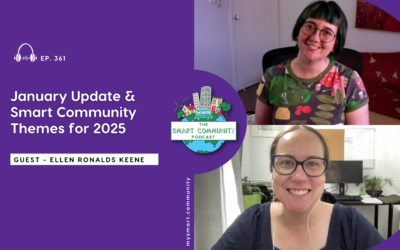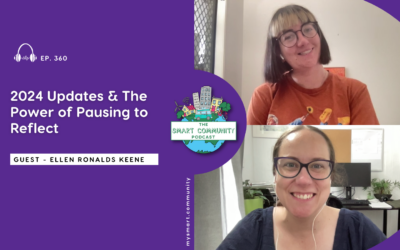Hi #SmartCommunity friends! In this episode I have a great chat with return guest Jess Coldrey. Now we first had Jess on the podcast back in Episode 258, which was released in October 2021. But more recently we re-shared that episode as part of our Summer Series and promised to have her back for an update, so here it is!
In this episode Jess and I talk about what she’s been up to in the last 18 months, including doing her Masters of Humanitarian Engineering in the UK. She tells us what Humanitarian Engineering is, and what a Smart Community means to her. We discuss the power of having different experiences and disciplines involved in projects because it leads to asking a different set of questions, and why we should be shifting to a more community-led project design approach. Jess then tells us about her work in endometriosis advocacy, including becoming a Laureat of The Australian French Association for Innovation and Research. We finish our chat discussing the emerging trend of the role of AI and machine learning in art, and how that influences work more broadly, including what we do with our time as more and more is automated. As always we hope you enjoy listening to this episode as much as we enjoyed making it.
Listen here:
What we cover in this episode:
- About Jess’s multidisciplinary background
- What Jess has been up to the last 18 months since she was on the Episode 258
- What Humanitarian Engineering is and why it’s relevant to Smart Communities
- Jess’s dissertation on drone tree planting
- The power of having different experiences and disciplines involved in projects
- The benefits of asking different sets of questions when working on Smart projects
- Why we should be shifting to a more community-led project design approach
- Jess’s work in endometriosis advocacy, including becoming a Laureat of The Australian French Association for Innovation and Research
- The emerging trend of the role of AI and machine learning in art and work
Quotes:
“I have a very multidisciplinary background; I have a degree in Visual Arts, Human Geography and Humanitarian Engineering. So I suppose I really am just captivated by how many different perspectives you can bring to a problem.”
“Since my training wasn’t in engineering, and I was more of a social scientist, I had a very maybe unique lens of how the social sciences could play a role in advancing innovation and gathering support for new sustainable technologies. And so I looked to try and find some sort of methodology or way of working that integrated the social into the engineering, and found Humanitarian Engineering.”
“I think it was just really valuable, from my perspective, to get to hear so many different people, not only from different countries, but different educational backgrounds, are all in a room together, and all with this kind of fresh motivation to want to do something about the world they saw around them.”
“Essentially, I was looking at how flying drones can plant trees. It’s a possibility, it’s been done, it’s technically possible. But how does that work when you look at existing forestry systems, and community systems relating to environmental governance and restoration? So I thought that would be a great case study for understanding how technology, sustainability and that community piece could come together.”
“Traditionally, you’re a structural engineer, you’re thinking, how do we get from safer bridge from point A to point B? And the sort of questions you ask might be, what’s the most effective way to get there?…Whereas a humanitarian engineer might look at that problem of how do you get from point A to point B, and ask a very different set of questions. So they might say, Who’s going on this journey? And where are they going? And are they going into a new community? Are those communities connected?”
“Being a relatively new field, is something that’s grown out of the field of international aid…And so these kind of methodologies and management tools that have come out of some quite extreme environments, I think are particularly pertinent to even developed cities and countries that are still trying to figure out how exactly they’re going to pull those strings together in our efforts towards mitigating climate change and supporting all the other SDGs.”
“We really need to be tuned in to what communities want, and how we can best utilise our funding to address those things that communities have identified for themselves.”
“I think of a Smart Community as something that’s very participatory. It’s something where communities are empowered to increase their own levels of education, health and connectivity.”
“The way I like to think of problems that I encounter, whether it’s something at work or something in life, I guess I’m trying to think whose problem is this? You know, what community am I a part of? And how can I do something, connect people, share something to help that community?”
Connect:
Connect with Jess on LinkedIn and art website jesscoldrey.com
Connect with me via email: hello@mysmart.community
Connect with My Smart Community via LinkedIn or Twitter and watch on YouTube
Podcast Production by Perk Digital






0 Comments